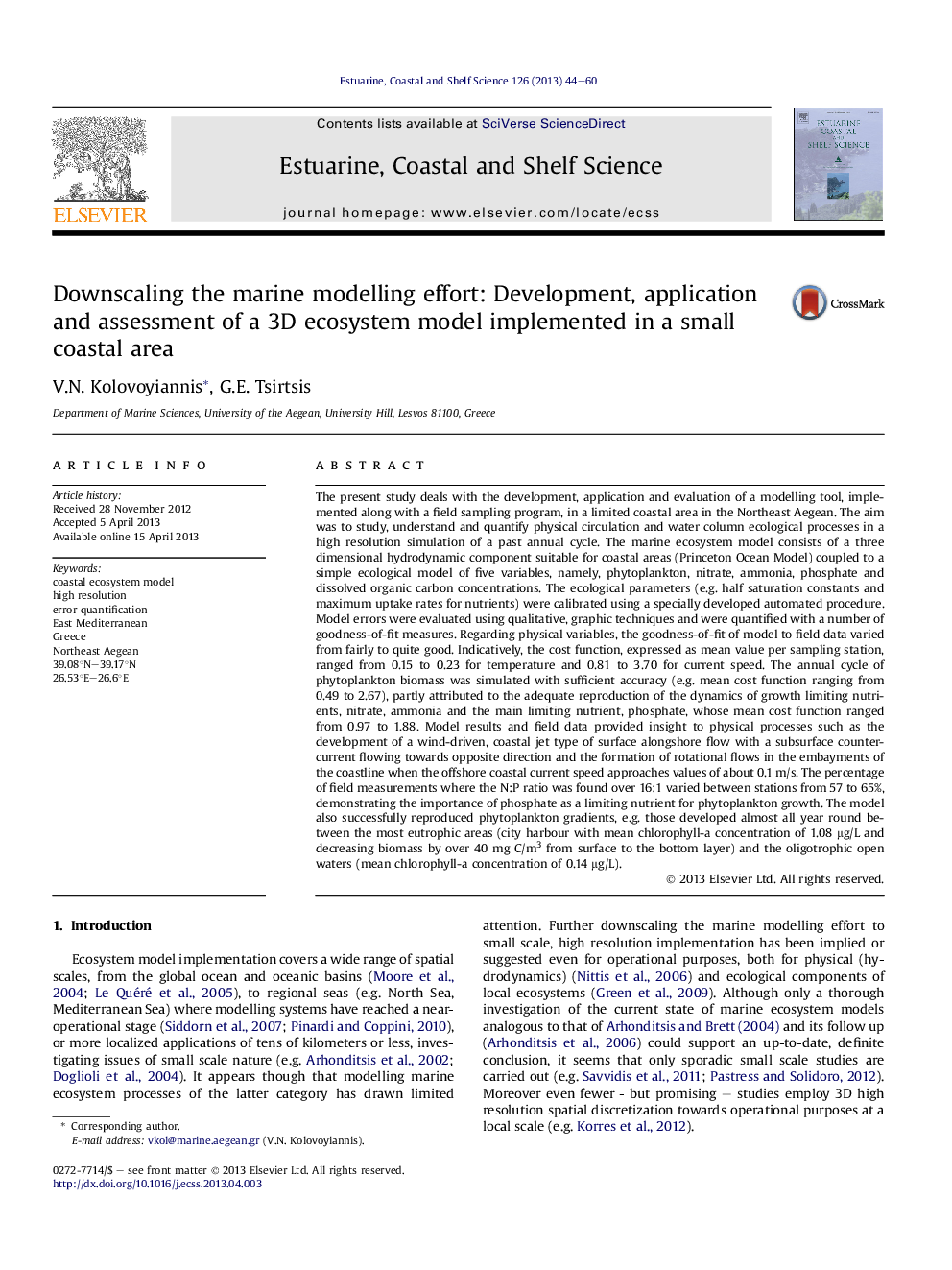| Article ID | Journal | Published Year | Pages | File Type |
|---|---|---|---|---|
| 4539893 | Estuarine, Coastal and Shelf Science | 2013 | 17 Pages |
The present study deals with the development, application and evaluation of a modelling tool, implemented along with a field sampling program, in a limited coastal area in the Northeast Aegean. The aim was to study, understand and quantify physical circulation and water column ecological processes in a high resolution simulation of a past annual cycle. The marine ecosystem model consists of a three dimensional hydrodynamic component suitable for coastal areas (Princeton Ocean Model) coupled to a simple ecological model of five variables, namely, phytoplankton, nitrate, ammonia, phosphate and dissolved organic carbon concentrations. The ecological parameters (e.g. half saturation constants and maximum uptake rates for nutrients) were calibrated using a specially developed automated procedure. Model errors were evaluated using qualitative, graphic techniques and were quantified with a number of goodness-of-fit measures. Regarding physical variables, the goodness-of-fit of model to field data varied from fairly to quite good. Indicatively, the cost function, expressed as mean value per sampling station, ranged from 0.15 to 0.23 for temperature and 0.81 to 3.70 for current speed. The annual cycle of phytoplankton biomass was simulated with sufficient accuracy (e.g. mean cost function ranging from 0.49 to 2.67), partly attributed to the adequate reproduction of the dynamics of growth limiting nutrients, nitrate, ammonia and the main limiting nutrient, phosphate, whose mean cost function ranged from 0.97 to 1.88. Model results and field data provided insight to physical processes such as the development of a wind-driven, coastal jet type of surface alongshore flow with a subsurface countercurrent flowing towards opposite direction and the formation of rotational flows in the embayments of the coastline when the offshore coastal current speed approaches values of about 0.1 m/s. The percentage of field measurements where the N:P ratio was found over 16:1 varied between stations from 57 to 65%, demonstrating the importance of phosphate as a limiting nutrient for phytoplankton growth. The model also successfully reproduced phytoplankton gradients, e.g. those developed almost all year round between the most eutrophic areas (city harbour with mean chlorophyll-a concentration of 1.08 μg/L and decreasing biomass by over 40 mg C/m3 from surface to the bottom layer) and the oligotrophic open waters (mean chlorophyll-a concentration of 0.14 μg/L).
